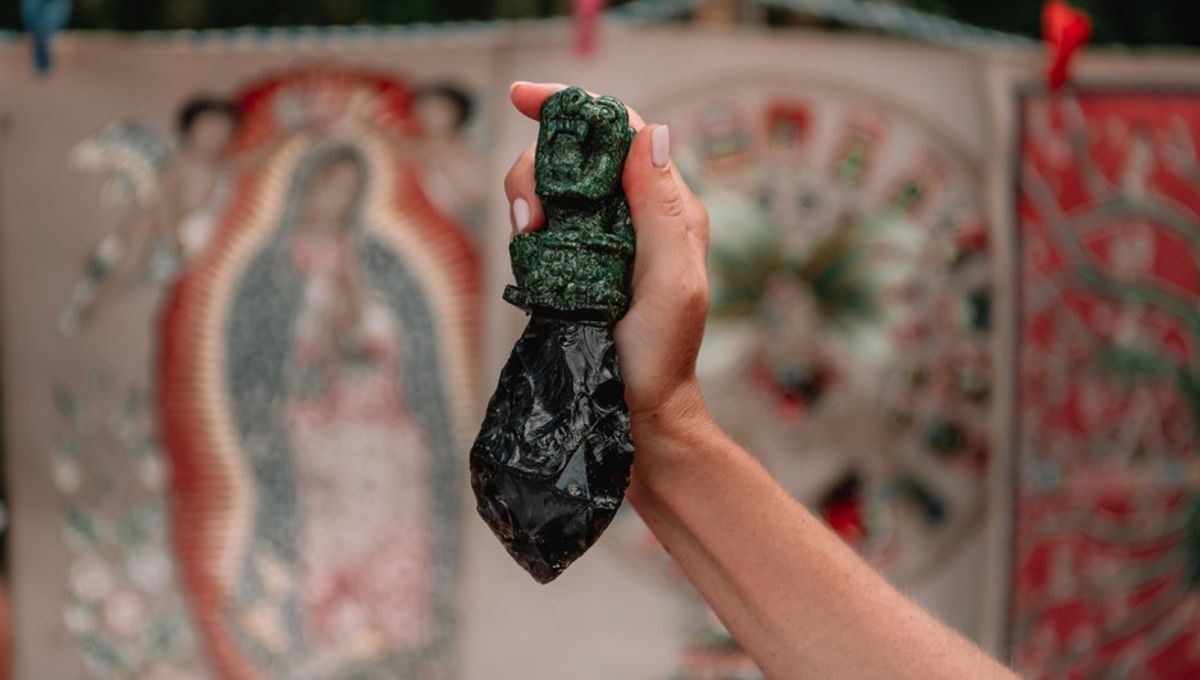
The Aztecs were big fans of obsidian, and often used the razor-sharp volcanic glass to slice through the chests of human sacrifices in order to extract the still-beating heart. Such was their love of this mesmerizing and deadly material that the Aztecs – also known as the Mexica – sought out obsidian from multiple sources across Mesoamerica, including some in territories controlled by their enemies.
To learn more about how the Mexica obtained their beloved obsidian, the authors of a new study analyzed 788 obsidian artifacts from the Templo Mayor, which is the principal temple in the ancient Aztec capital of Tenochtitlan in the heart of Mexico City. Of these, around 90 percent came from an outcrop in the Sierra de Pachuca, which was prized for its green-tinted obsidian known as tolteca itztli – meaning “obsidian of the masters”.
This viridescent material was symbolically associated with the mythical city of Tollan – where the creator god Quetzalcoatl was said to reside – and was used to make almost all of the ritual artifacts found at Tenochtitlan. However, the study authors note that the site also contains a surprising number of mundane obsidian tools – such as those used by construction workers – which were made from raw materials from other, less prestigious sources.
“Although the Mexicas preferred green obsidian, the high diversity of obsidian types, mainly in the form of non-ritual artifacts, suggests that obsidian tools from multiple sources reached the capital of the Empire through market instead of direct acquisition in the outcrop,” said lead study author Diego Matadamas-Gomora in a statement.
In their new paper, the researchers explain that obsidian from sources other than Sierra de Pachuca was readily available to Tenochtitlan’s inhabitants, adding that “it was not necessarily a prestige good for them, and it seems that the state did not control its distribution.”
Overall, the study authors identified obsidian from seven different outcrops besides Pachuca, including some located in enemy territory. For instance, some of the artifacts came from Ucareo, which lay outside the Mexica realm and was controlled by a rival group called the Purépecha – whom the Aztecs tried but failed to conquer.
The study authors also noted a shift in obsidian use after the Aztec Triple Alliance of 1430 CE, when Tenochtitlan consolidated its power by forming a pact with the other Nahua-speaking city states of Texcoco and Tlacopan. After this point, obsidian used for ritual purposes became highly standardized and controlled, with access to Pachuca obsidian becoming restricted to the elites for ceremonial use.
The study is published in the Proceedings of the National Academy of Sciences.
Source Link: Obsidian Blades At The Main Aztec Temple Came From Enemy Territory